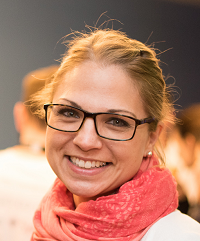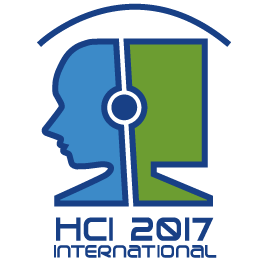Jennifer Romano Bergstrom (short bio)
Facebook, United States
Andrew Schall (short bio)
Key Lime Interactive, United States
Objectives:
This is a basic to intermediate course in eye-tracking methodology and will provide an overview of how eye tracking can be a valuable tool for user researchers. Attendees will learn:
- The fundamentals of eye-tracking methodology in the field of user experience
- How to design a user experience test to best utilize eye-tracking technology
- How to effectively conduct and moderate an eye-tracking session
- How mobile eye tracking is different from desktop eye tracking
- When NOT to use eye tracking
- How to analyze eye-tracking data to reveal usability and design issues
- How to apply eye-tracking results to improve usability & user experience design
Content:
The course will feature a diverse mix of presentation materials and participatory activities including eye-tracking visualizations, quantitative data, and video clips from past UX studies, group and individual exercises, and hands-on experience with an eye tracker. Both facilitators have many years of experience with eye tracking and will frequently discuss stories and case studies where eye-tracking research was involved.
The first half of the session will provide an overview of eye tracking in the field of user experience research. Participants will work in small groups to design and conduct a user research study under the guidance of the tutorial facilitators. All participants will have an opportunity to gain hands-on experience with the eye tracker. Attendees will experience the role as a participant, moderator, and observer during the eye-tracking study.
The second half of the session will begin with a discussion of theories and methods for analyzing the results from an eye-tracking study. Participants will gain an understanding of commonly used information visualizations and techniques used to understand quantitative and qualitative data.
Target Audience:
Tutorial attendees should be familiar with traditional usability testing methodology. The facilitators will assume that all participants have an understanding of user research and will ideally have had some experience conducting usability tests.
Prior eye tracking experience is not required for this tutorial. The first half of the tutorial will be used to make sure that all participants have a solid understanding of basic eye-tracking principles and applications. The second half of the session will delve into more advanced applications and how to analyze eye-tracking data.
Bio Sketch of Presenters:
Jen and Andrew are co-authors of Eye Tracking in User Experience Design, 2014.

Dr. Jennifer Romano Bergstrom is the lead UX Researcher for Safety Check and Privacy products at Facebook. Jen specializes in eye tracking, usability testing, survey design, and UX for older adults. Prior to joining Facebook, Jennifer was the UX Project Leader at Fors Marsh Group, where she led a team of highly-skilled UX researchers, she completed a post-doc at the US Census Bureau, where she studied age-related differences in Internet performance. Jen has used eye tracking as a method to understanding users’ interactions with products, coupling it with traditional UX measures for numerous clients, including the National Cancer Institute (NCI), the Consumer Financial Protection Bureau (CFPB), Nielsen, the VA, FEMA, and currently for Facebook. Jen has presented research at numerous national and international conferences and publishes in peer-reviewed journals, including International Journal of Human-Computer Interaction, Journal of Usability Studies, Survey Practice, Applied Cognitive Psychology, and Memory. Jen co-authored ‘Eye Tracking in User Experience Design’ (2014) with Andrew Schall and ‘Usability Testing for Survey Research’ (2017). Jennifer is the President of the User Experience Professionals Association (UXPA), previously Director of Marketing and Communications for UXPA, President UXPA-DC and the DC Chapter of the American Association for Public Opinion Research (DC-AAPOR). Jennifer received a Ph.D. and M.A. in Applied/Experimental Psychology from The Catholic University of America and a B.A. in Psychology from Central Connecticut State University.

Andrew Schall has worked with numerous public and private organizations to use eye tracking as part of their user-centered design process including organizations such as Aflac, Fossil, GlaxoSmithKline, NASA, PBS, Rovio, and U.S. Department of Energy. His eye tracking projects have ranged from understanding how children interact with online multimedia to evaluating advanced library search and retrieval systems. He has pioneered new ways to collect, analyze, and present eye-tracking data. Andrew was formerly the eye tracking guru and trainer at Human Factors International and has conducted his Eye Tracking Bootcamp with several organizations including Comcast and GlaxoSmithKline. He is a frequent presenter on eye tracking, speaking at conferences including Human Computer Interaction International, User Experience Professionals Association, and User Focus. Andrew has over 10 years of experience as a UX researcher and designer and is currently Principal Researcher and Director of User Experience at
Key Lime Interactive, a UX consulting firm outside Miami, FL. He received his B.S. in Information Technology & New Media from the Rochester Institute of Technology, M.S. in Interaction Design & Information Architecture from the University of Baltimore, and is currently a Ph.D. candidate in Human-Centered Computing at the University of Maryland, Baltimore County.
Top of Page




